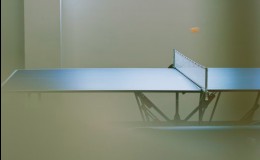Berlin: Eyebot drones, the latest in surveillance technology, would promptly spot mischief makers during major sporting or social events, or act as high-resolution 3D street imaging systems, according to its developers.
A typical scenario for special 3D sensors within these drones, developed by researchers at Fraunhofer Institute, Germany, to ensure smooth acrobatics and prevent collision among the flock of flying eyebots, is to scan multitudes of soccer fans for trouble-makers on the ground below.
These unmanned aerial vehicles (UAVs) are a kind of mini-choppers, with a wingspan of two metres and propeller on each of their two variable-geometry side wings, enabling rapid and precise manoeuverability.
The distance sensor offers significant advantages over radar, which measures distances using reflected echoes. "The sensor has a much higher local resolution," says Werner Brockherde, the project head, according to a Fraunhofer statement.
"Given the near-field operating conditions, radar images would be far too coarse," added Brockherde.
The flying robots are capable of identifying even small objects measuring 20 by 15 cms at ranges of up to 7.5 metres. Moreover, this distance information is then transmitted at the very impressive rate of 12 images per second.
A CMOS (Complementary Metal Oxide Semiconductor) sensor lies at the heart of the anti-collision technology. "The sensor can measure three-dimensional distances very efficiently," says Brockherde.
Over the playing field, their cameras and sensors capture urgently-needed images and data, and transmit them to the control centre. Where are the most seriously injured people? What's the best way to separate the rival gangs?
The information provided by the drones allows the head of operations to make important decisions more quickly, while the robots conduct their business above the arena autonomously - and without ever colliding with each other, or with any other obstacle.
According to researchers, even when a drone is flying directly into the sun, the sensor will deliver accurate images.
Whether deployed to create virtual maps of inaccessible areas, to monitor construction sites or to measure contamination at nuclear plants, these UAVs could potentially be used in a wide range of applications, obviating the need for expensive aerial photography or satellite imaging. (IANS)







